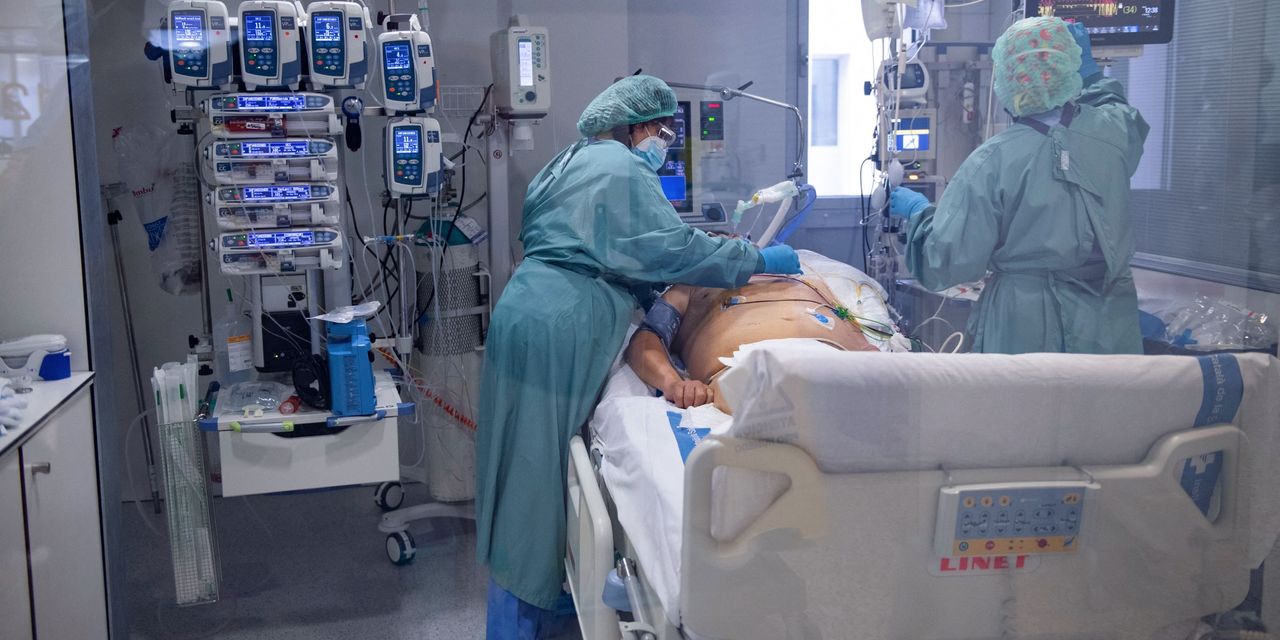People who have had COVID-19 are facing a higher risk of neurological and psychiatric conditions some two years later as compared with other respiratory illnesses, according to a large-scale study that was published in the journal Lancet Psychiatry.
Researchers analyzed data on 14 neurological and psychiatric diagnoses using electronic health records and found COVID sufferers had a higher risk of brain fog, dementia and psychosis, along with anxiety and depression, albeit for different lengths of time.
“We found that the risks of post-COVID neurological and psychiatric outcomes follow different trajectories: the risk of cognitive deficit, dementia, psychotic disorder, and epilepsy or seizures remain elevated 2 years after SARS-CoV-2 infection, while the risks of other diagnoses (notably, mood and anxiety disorders) subside after 1-2 months and show no overall excess over the whole 2-year follow-up,” the authors wrote.
Adults aged 64 and under had an increased risk of brain fog, while those aged 65 and older had an increased risk of brain fog, dementia and psychotic disorders.
“These findings are relevant for policy makers involved in anticipating and addressing the health burden of the pandemic, for researchers seeking to identify the mechanisms underpinning brain sequelae of COVID-19, and for patients and clinicians wishing to know the neurological and psychiatric risks following SARS-CoV-2 infections,” the authors wrote.
The news comes as U.S. known cases of COVID are continuing to ease, although the true tally is likely not being reflected as many people are testing at home and results are not being collected.
The daily average for new cases stood at 98,337 on Wednesday, according to a New York Times tracker, down 18% from two weeks ago. The daily average for hospitalizations was down 6% at 41,383, while the daily average for deaths is up 3% to 491.
Coronavirus Update: MarketWatch’s daily roundup has been curating and reporting all the latest developments every weekday since the coronavirus pandemic began
Other COVID-19 news you should know about:
• A new study found three generic drugs — fluvoxamine, which is often prescribed to treat depression, the controversial antimalarial ivermectin, and the diabetes pill metformin — failed to prevent the kind of severe COVID-19 that leads to an emergency-room visit or hospitalization., MarketWatch’s Jaimy Lee reported. The research, published Wednesday in the New England Journal of Medicine, examined whether any of the three medications benefited 1,323 patients when prescribed in the early days of a COVID-19 infection. Some of the study’s participants received a combination of metformin and fluvoxamine or metformin and ivermectin, most were vaccinated, and all were overweight. The randomized, placebo-controlled, Phase 3 study was conducted from December 2020 January of this year by researchers at the University of Minnesota.
From the archive: ‘You will not believe what I’ve just found.’ Inside the ivermectin saga: a hacked password, mysterious websites and faulty data.
• Half of people in poorer countries have now received two vaccine doses against COVID-19, a global vaccine alliance said Thursday, hailing progress in closing the vaccine equity gap, AFP reported. Gavi, which co-leads the Covax global vaccine distribution scheme with the World Health Organization and others, said the 92 lower-income countries receiving donor-funded jabs had reached 50% coverage on average.
• As of early August, just 5% of children below the age of 5 who are eligible for COVID vaccination had a first of two shots, the New York Times reported. The low take-up rate suggests a lack of urgency among parents, who can ask pediatricians and family physicians to provide them. What’s more, just 30% of those aged 5 to 11 are fully vaccinated, even though that age group has been eligible since the fall of 2021.
• New Zealand’s regulator has granted provisional approval to Novavax’s
NVAX,
COVID vaccine in adolescents aged 12 through 17. The decision was based on data from a late-stage trial involving 2,247 adolescents aged 12 through 17 across 73 sites that found it had 80% efficacy during the delta wave, the company said. The Novavax vaccine, which is protein-based, unlike the mRNA vaccines developed by Moderna
MRNA,
and Pfizer
PFE,
with German partner BioNTech
BNTX,
has now been granted authorization in the 12-to-17 age group in India, the European Union, Australia, Japan and Thailand, and is actively under review in other markets.
Here’s what the numbers say
The global tally of confirmed cases of COVID-19 topped 593.4 million on Tuesday, while the death toll rose above 6.44 million, according to data aggregated by Johns Hopkins University.
The U.S. leads the world with 93.3 million cases and 1,039,037 fatalities.
The Centers for Disease Control and Prevention’s tracker shows that 223.5 million people living in the U.S. are fully vaccinated, equal to 67.3% of the total population. But just 107.9 million have had a first booster, equal to 48.3% of the vaccinated population.
Just 21 million of the people 50 years old and over who are eligible for a second booster have had one, equal to 32.7% of those who had a first booster.


